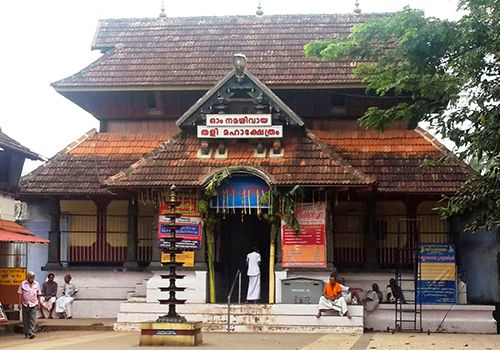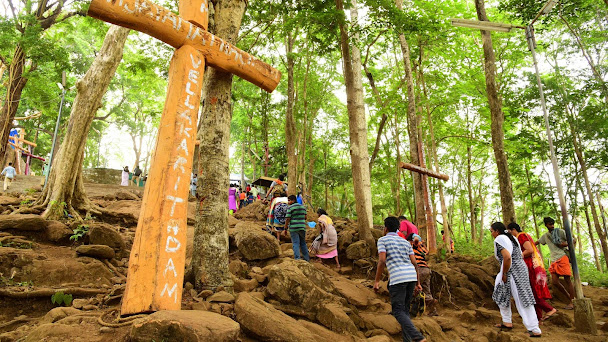Kozhikode Tali Kshethram
This famous temple at the center of Calicut city has its origin in the 11th century. This beautiful temple dedicated to Lord Shiva is present as a deity in the Umamaheswara posture. The sanctum of the temple was built by Parasurama towards the end of Dwaparyuga. Tali temple has a lot of history related to the establishment of Zamorin rule, it’s prosperity & life of erstwhile Kozhikode. The temple was part of the Kovilkota arrangement which gave the name Kozhikode which literally means place which has both temples & palaces, with the city built around it. The temple was built by Swami Thirumalpad.
The temple before the Zamorins was looked after by the Moosads who were part of the lineage of the Namboothiris. Before the Zamorins, the place was ruled by the Kolathunadu & Kolathiri faction who lost power to Zamorins. The temple was taken over by the Zamorins which was resisted by the Moosads. This resulted in an altercation & the Zamorins threw Namboothiris out of the temple rituals. The Moosads protested by going on a fast indefinitely outside the temple. The Zamorins who were a call away from the temple decided to turn a deaf ear and this resulted in the Namboothiris losing their life. The story also says that the Namboothiris were killed by the Zamorins, in both cases it resulted in devakopam or wrath of the gods. So in the 13th century based on a devaprasnam conducted by the King to resolve the wrath, it was found that the best way to please the God was to arrange an annual celebration for the Namboothiris or the Battathanam in the month of Revathi. Thus started the festival of Revathi Pattathanam which till date is conducted at the temple premises. This 7 day ritual is where scholars from all over come to Tali for a competition of their minds in different streams from religion, literature, philosophy etc. The event is considered to be one of the most important in the calendar for the Zamorins. The competition is celebrated as a festival & the performances are conducted in the premises of the temple. The best scholar is awarded the title of Bhatta & a panakizhi as prize for the efforts. The competition begins in the auspicious Kerala month of Thulam in the asterism of Revathi & was known as Revathi Battadanam which later became known as Revathy Pattathanam. The four fields of competition were Tarka, Vyakarna, Mimamsa & vedanta and the judges are scholars who have earned the shathas in previous years. The competition over the years has been so difficult that the renowned scholar who authored Narayaneeyam - Melpathur Narayana Bhattathiri was rejected six times. The Zamoin Raja himself sits in the old school panel of judges.
The
temple is a beautiful work of architecture which is decorated by stone, wood
& brass. The temple is surrounded on all sides by a high fort-like wall
that is actually designed to resemble the belly of an elephant. The entrance of
the temple has big towers on both sides with a huge door & wooden carvings
along. Inside there are two flag posts, one for the main deity of Shiva &
the other for Lord Krishna’s sanctum. The temple is designed in the form of a
chariot where the deity of Shiva in the form of a lingam is placed on a higher
pedestal. The lingam is actually considered to be one among the Jyotirlingas of
Shiva.
The temple was almost destroyed by Tipu Sultan during his crusade along Malabar. The Zamorins rebuilt the temple to its current glory. Today the area around the temple is part of the Heritage trail of the government.




Comments
Post a Comment